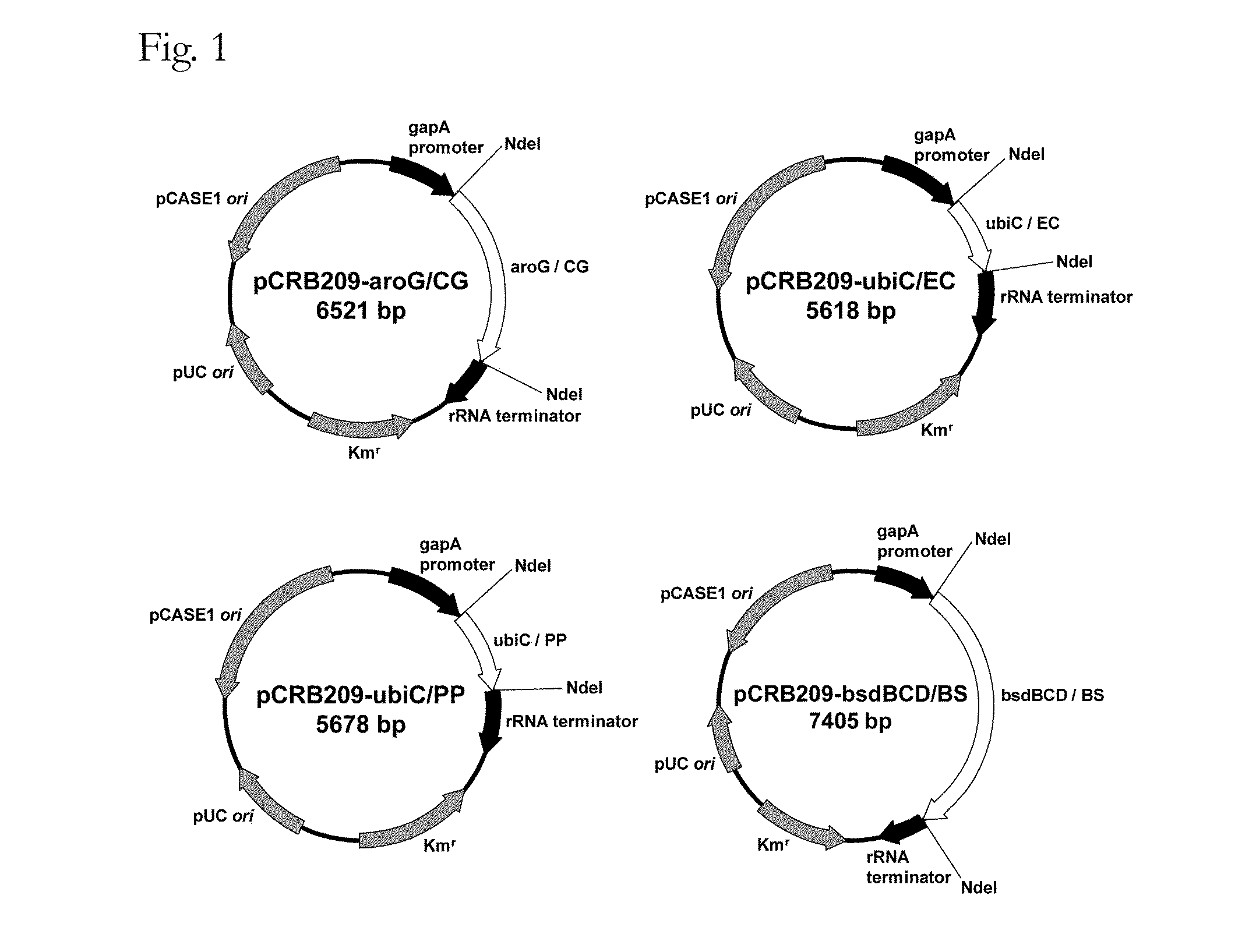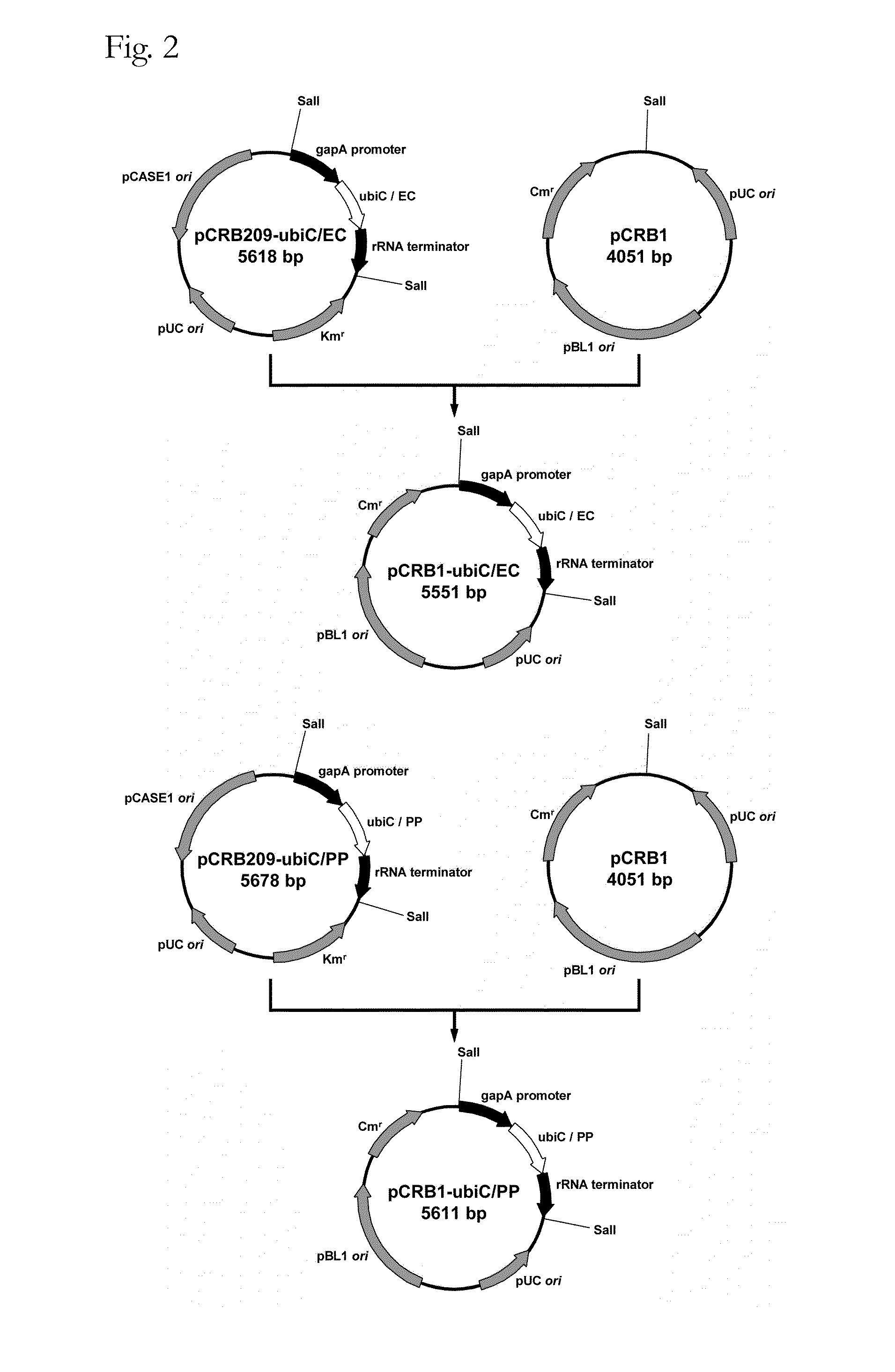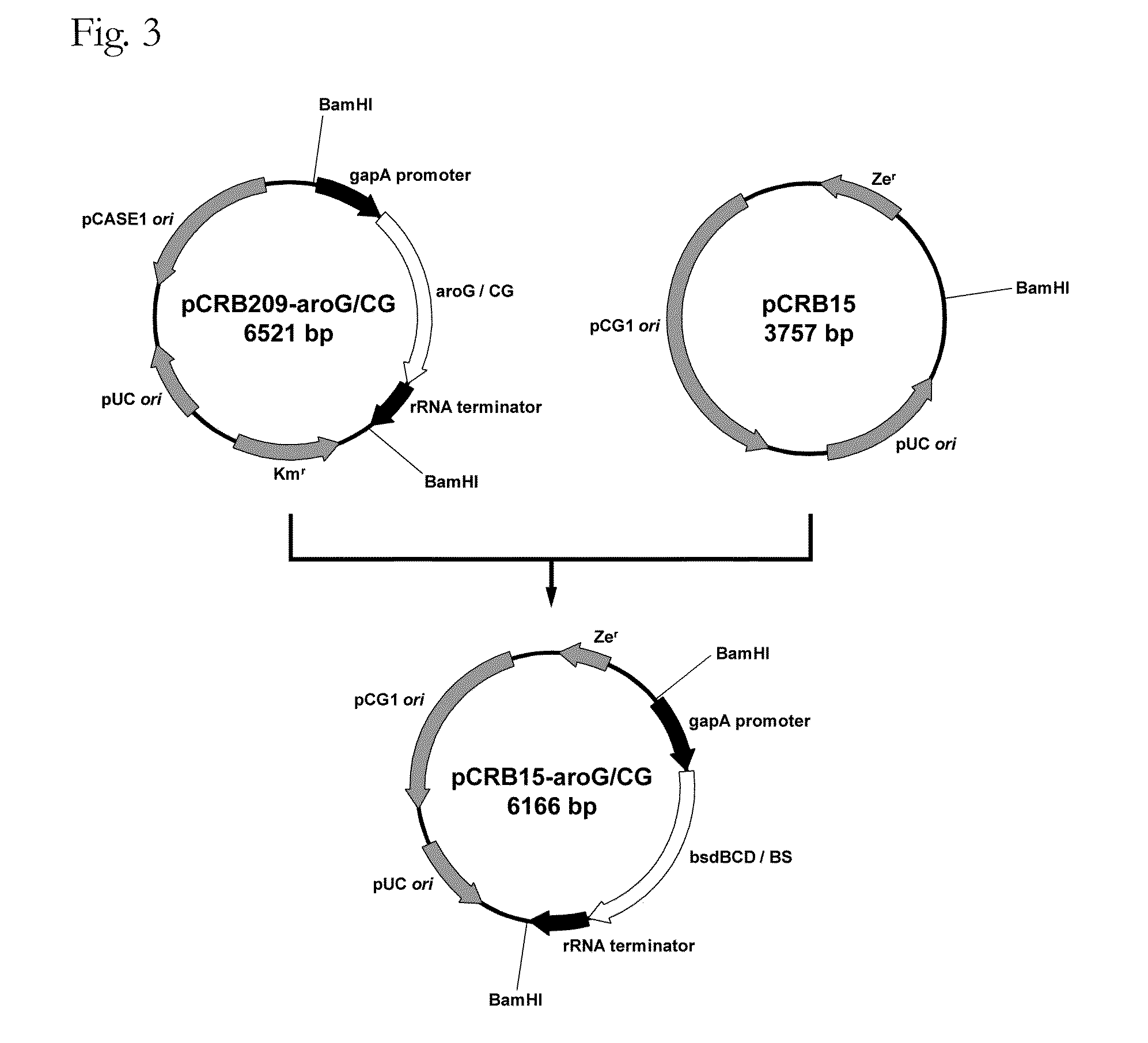Coryneform bacterium transformant and process for producing phenol using the same
a technology of phenol and cyanobacterium, which is applied in the field of producing phenol, can solve the problems of inability to produce lactic acid or ethanol, and inability to produce industrial phenol, etc., and achieves the effects of phenol production, sufficient efficiency, and efficient production
- Summary
- Abstract
- Description
- Claims
- Application Information
AI Technical Summary
Benefits of technology
Problems solved by technology
Method used
Image
Examples
example 1
Cloning and Expression of Phenol-Producing Genes
[0112](1) Extraction of Chromosomal DNA from Microorganisms
[0113]To extract chromosomal DNA from Corynebacterium glutamicum R (FERM P-18976), the bacterium was inoculated, with the use of a platinum loop, into A medium (2 g of (NH2)2CO, 7 g of (NH4)2SO4, 0.5 g of KH2PO4, 0.5 g of K2HPO4, 0.5 g of MgSO4.7H2O, 1 mL of 0.06% (w / v) Fe2SO4.7H2O+0.042% (w / v) MnSO4.2H2O, 1 mL of 0.02% (w / v) biotin solution, 2 mL of 0.01% (w / v) thiamin solution, 2 g of yeast extract, and 7 g of vitamin assay casamino acid were dissolved in 1 L of distilled water), which was supplemented with 50% (w / v) glucose as a carbon source to a final concentration of 4%, and cultured with shaking at 33° C. until the logarithmic growth phase. After the bacterial cells were collected, chromosomal DNA was recovered from the collected cells with the use of a DNA extraction kit (trade name: GenomicPrep Cells and Tissue DNA Isolation Kit, made by Amersham) according to the inst...
example 2
Experiment of Phenol Production Using Corynebacterium glutamicum Phenol-Producing Gene Transgenic Strains and Corynebacterium Glutamicum by-Product Formation Pathway Disruptants
[0457]Phenol production was compared among the Corynebacterium glutamicum phenol-producing gene transgenic strains PHE11 to PHE18 prepared in Example 1.
[0458]Each of the Corynebacterium glutamicum phenol-producing gene transgenic strains (PHE11 to PHE18) was applied to A agar medium (2 g of (NH2)2CO, 7 g of (NH4)2SO4, 0.5 g of KH2PO4, 0.5 g of K2HPO4, 0.5 g of MgSO4.7H2O, 1 mL of 0.06% (w / v) Fe2SO4.7H2O+0.042% (w / v) MnSO4.2H2O, 1 mL of 0.02% (w / v) biotin solution, 2 mL of 0.01% (w / v) thiamin solution, 2 g of yeast extract, 7 g of vitamin assay casamino acid, 40 g of glucose, and 15 g of agar were suspended in 1 L of distilled water) containing antibiotics shown in Table 2, and left stand in the dark at 28° C. for 20 hours.
[0459]An inoculation loop of each of the Corynebacterium glutamicum phenol-producing gen...
example 3
Experiment of Phenol Production Using Corynebacterium glutamicum Phenol-Producing Gene Transgenic Strains and Corynebacterium Glutamicum by-Product Formation Pathway Disruptants
[0466]Phenol production was compared among the Corynebacterium glutamicum phenol-producing gene transgenic strains PHE19-1 to PHE19-12 prepared in Example 1.
[0467]Each of the Corynebacterium glutamicum phenol-producing gene transgenic strains (PHE19-1 to PHE19-12) was applied to A agar medium (2 g of (NH2)2CO, 7 g of (NH4)2SO4, 0.5 g of KH2PO4, 0.5 g of K2HPO4, 0.5 g of MgSO4.7H2O, 1 mL of 0.06% (w / v) Fe2SO4.7H2O+0.042% (w / v) MnSO4.2H2O, 1 mL of 0.02% (w / v) biotin solution, 2 mL of 0.01% (w / v) thiamin solution, 2 g of yeast extract, 7 g of vitamin assay casamino acid, 40 g of glucose, and 15 g of agar were suspended in 1 L of distilled water) containing antibiotics, namely, 5 μg / mL of chloramphenicol, 50 μg / mL of kanamycin, and 25 μg / mL of zeocin, and left stand in the dark at 28° C. for 20 hours.
[0468]An ino...
PUM
| Property | Measurement | Unit |
|---|---|---|
| Time | aaaaa | aaaaa |
| Digital information | aaaaa | aaaaa |
| Reduction potential | aaaaa | aaaaa |
Abstract
Description
Claims
Application Information
 Login to View More
Login to View More - R&D
- Intellectual Property
- Life Sciences
- Materials
- Tech Scout
- Unparalleled Data Quality
- Higher Quality Content
- 60% Fewer Hallucinations
Browse by: Latest US Patents, China's latest patents, Technical Efficacy Thesaurus, Application Domain, Technology Topic, Popular Technical Reports.
© 2025 PatSnap. All rights reserved.Legal|Privacy policy|Modern Slavery Act Transparency Statement|Sitemap|About US| Contact US: help@patsnap.com



